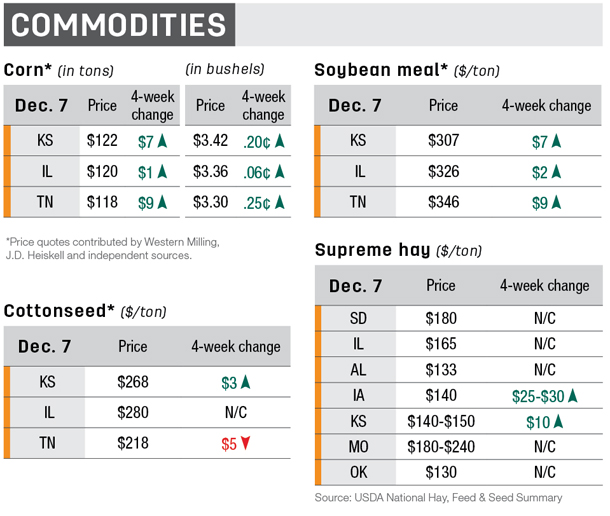I asked Dr. Brent Credille of University of Georgia’s Food Animal Health and Management Program to list some common diseases to watch for in drought situations. Producers should continue to be mindful of nitrates and mycotoxins in stored forage as well as blue-green algae in standing water supplies.
These issues can bring about big losses quickly. Test your forages and water to prevent the worst.
 The costliest diseases over the long haul may simply be lack of nutrition or malnutrition. Dr. Credille advises producers to approach malnutrition as a disease with the overarching symptom as infertility. If the appropriate nutrition is not available to both cows and bulls, the next calf crop will be diminished.
The costliest diseases over the long haul may simply be lack of nutrition or malnutrition. Dr. Credille advises producers to approach malnutrition as a disease with the overarching symptom as infertility. If the appropriate nutrition is not available to both cows and bulls, the next calf crop will be diminished.
Also, calves reared in a low plane of nutrition are more susceptible to respiratory disease as stockers and feeders. Vaccinations will have lowered efficacy. Proper nutrition is key to preventing further economic losses stemming from the drought of 2015.
Spring calving
Nutritional needs increase by at least 50 percent after calving. Check with your veterinarian about nasal respiratory vaccines in newborn calves with the onslaught of unique weather conditions we are experiencing that have brought on extra dust and a lack of stockpiled grass for newborns to lay in.
Newborns appreciate and thrive better when shelter and clean resting areas are available. Look for easy and inexpensive ways for calves to bed down and stay out of the elements. It could promote growth performance and reduce sickness whether damp or dry.
Heifers are still growing and need to reach two-thirds of their mature weight by breeding. Evaluate your bulls for foot issues, general health and body condition. Mature bulls need to go into the breeding season with body condition scores of 5 with no ribs showing.
Bulls can lose up to 3 pounds a day during breeding season. Schedule a BSE program at least 30 days prior to turnout.
Fall calving
Cows bred Jan. 1 should calve Oct. 13. If hay quality is average or poorer, strategic supplementation is critical. If winter annuals exist, two-hour grazing periods with free-choice hay can stretch standing forage. ![]()

-
Jason Duggin
- University of Georgia
- Beef Extension Specialist
- Email Jason Duggin








